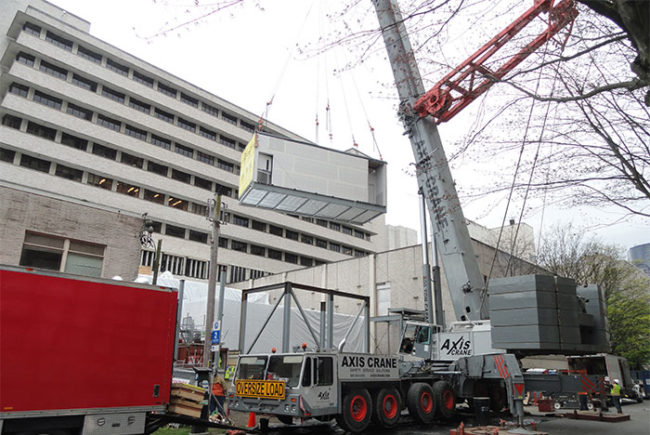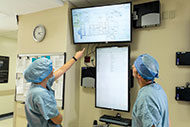Nor-Lea Medical Clinic implemented its RTLS system to help manage its patient population after seeing its number of patient visits jump from 32,000 to 57,000.
When Lovington, N.M., experienced a population spike due to a recent boom in oil and gas exploration in the area, Nor-Lea Medical Clinic likewise saw the number of patient visits jump from 32,000 to 57,000 just two years later.
Patient registrations took as long as 45 minutes followed by two-hour waits before seeing a caregiver. That was after waiting one to two months just to get an appointment.
Not surprisingly, satisfaction scores plummeted, forcing health care officials to find patient flow and scheduling solutions. After doing some research, Nor-Lea implemented a real-time locating system (RTLS) that drastically reduced wait times, improved patient flow and also raised both patient and physician satisfaction.
The health facility implemented the Versus Advantages patient flow system that uses small, lightweight locating badges worn by both patients and employees. Integrated with Nor-Lea’s electronic health records, lab and scheduling systems, and combined with a rules-based workflow engine, the system automatically updates electronic whiteboards that allow staff to know:
- Which rooms are available or in need of turnover.
- Where patients are, how long they’ve been waiting and what services they need.
- Who has seen the patient and who patients still need to see.
Pictured from left to right: Nor-Lea employees Venkata A. Mangalagiri, M.D., and Jessica Lizardo, RN, wear small, lightweight locating badges that also are worn by patients. The badges track locations and automatically update electronic whiteboards with critical information.
“Instead of continually checking the waiting room and constantly communicating with each other about the status of various patient care tasks, physicians and other staff members can simply consult the Versus system and immediately know what actions to take to keep patients moving,” says Dan Hamilton, COO, Nor-Lea Hospital District.
The clinic also utilized the system’s historical data, available through the Versus reporting tool Reports Plus Analytics. The information on wait times, door-to-doctor times, room and staff utilization and more provided the data needed to make changes.
Even with the new RTLS, the medical clinic needed to improve lingering workflow issues. But system data helped to identify and solve those challenges, which reduced patient wait times by 94 percent, and increased patient satisfaction from 24 to 80 percent and physician satisfaction to 93 percent from a low of 24 percent. The changes led to the clinic’s first profitable year since it opened in 2011.
Northern Arizona Healthcare’s Verde Valley Medical Clinic–Camp Verde is so confident the RTLS will work that it eliminated the waiting room at its new facility, a 17-room clinic in rural Verde Valley that offers primary care and ophthalmology services.
To give clinic staff real-time visibility to the various stages of the patient visit and improve efficiencies, the Camp Verde campus implemented an RTLS patient flow solution like the one used at Nor-lea Medical Clinic.
Instead of sending patients to a traditional waiting room, front desk staff at the Camp Verde campus review a real-time clinic floor plan to determine which exam rooms are open. A patient receives a locator badge and room number reservation.
Once the patient occupies the reserved exam room, the system software automatically updates the room on the real-time floor plan, enabling staff to know that the patient is ready to be seen.
Patients at Verde Valley Medical Clinic–Camp Verde also have easier access to specialty providers with the patient flow improvements. When the orthopedic physician visits on Fridays, the Advantages application streamlines patient throughput, so that 30 orthopedic patients can receive care within a two-hour window.
As with Nor-Lea Medical Clinic, the Camp Verde campus facility is using RTLS data to improve operations through the use of Report Plus Analytics. The reporting platform delivers accurate operational metrics that staff can use to increase room utilization, adjust staffing ratios and more.




